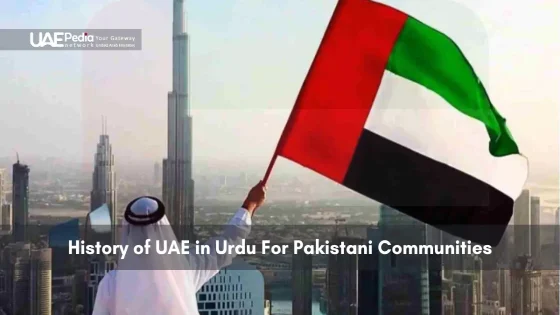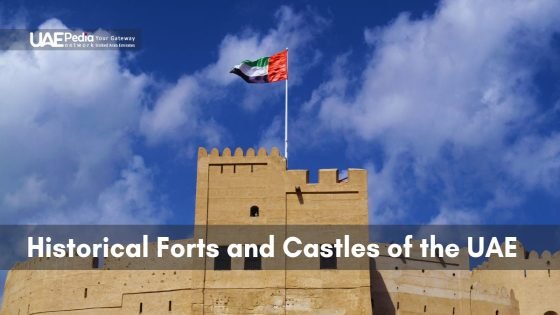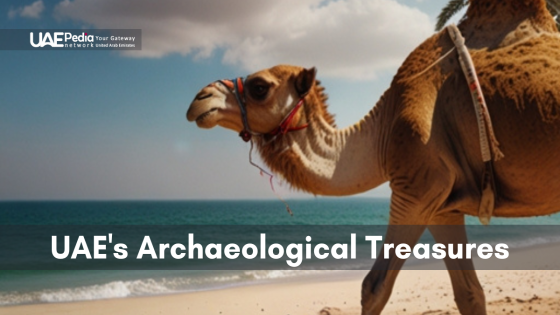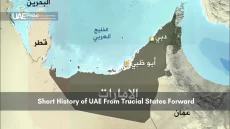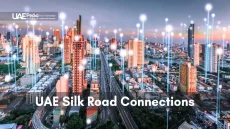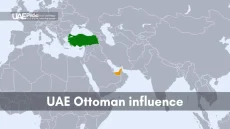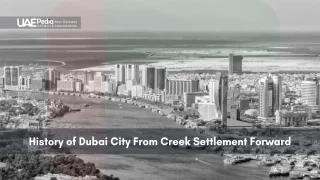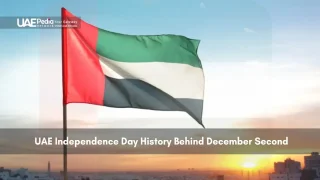How does a quiet coastal settlement become a global powerhouse in under 50 years? Dubai’s story isn’t just about skyscrapers—it’s rooted in centuries-old trading routes, resilient communities, and spaces where tradition meets tomorrow.
Long before luxury malls and futuristic architecture, this emirate thrived as a hub for pearl divers and merchants. The Al Fahidi neighborhood—often called the cultural heartbeat of the city—still whispers tales of Bedouin life through its wind-tower houses and narrow alleyways. Here, saffron-scented souks and aromatic coffee houses offer more than souvenirs; they’re portals to another time.
We’re exploring the landmarks that defined Dubai’s identity: from ancient forts guarding trade routes to museums preserving Emirati craftsmanship. You’ll learn why the Creek remains the lifeblood of the region and how restored heritage sites like Al Shindagha Museum connect past to present.
Key takeaways:
- Discover how humble beginnings shaped today’s metropolis
- Uncover hidden stories behind iconic markets and forts
- Experience living traditions in the Old Town’s maze-like streets
- Get insider tips for respectful cultural exploration
Stepping Back in Time: The Origins of Dubai
Imagine a time when wooden dhows dotted the horizon instead of yachts, and the scent of spices overpowered luxury perfumes. This was the world along the Dubai Creek in the 1800s—a humble fishing village where survival depended on pearl diving and trade.
Understanding Dubai’s Transformation from Fishing Village to Trading Hub
The creek’s calm waters became a natural highway for merchants. By the 1900s, traders from India, Persia, and East Africa docked here, exchanging textiles, dates, and gold. As one historian notes:
“This wasn’t just a port—it was a cultural crossroads where languages blended like saffron in cardamom coffee.”
Three factors fueled growth:
| Resource | Early Use | Modern Legacy |
|---|---|---|
| Pearls | Primary income source | Luxury jewelry markets |
| Wind Towers | Natural cooling systems | Architectural inspiration |
| Abra Boats | Transportation | Cultural tourism icons |
The Role of the Al Maktoum Family and Early Settlements
When Sheikh Maktoum bin Butti established rule in 1833, he prioritized open trade policies. His descendants, including Sheikh Mohammed bin Rashid, preserved this vision. Walk through Al Shindagha today, and you’ll see coral-stone houses where leaders once negotiated treaties.
The Old Town’s maze-like streets still buzz with life. Artisans craft pottery near modern galleries, while children play football beneath centuries-old barjeel wind towers. It’s this mix—raw heritage meeting tomorrow’s energy—that makes the area unforgettable.
Exploring Historic Dubai: Iconic Landmarks
Ever wandered through a labyrinth where walls shimmer with 24-karat stories? The Gold Souk isn’t just a market—it’s a living museum of ambition. Artisans here still weigh nuggets on brass scales, their displays cascading with Bedouin-inspired necklaces and modern minimalist rings. A merchant once told us:
“Gold here isn’t sold—it’s traded with tales of who wore it first.”
Just around the corner, the Spice Souk hits your senses first. Sacks of turmeric, rose petals, and oud resin crowd stalls unchanged for generations. We love how vendors share recipes alongside purchases—throw saffron into rice, they’ll say, or steep cardamom in your morning coffee.
The Old Town’s buildings whisper secrets, too. Coral stone walls—cut by hand centuries ago—stand beside wind towers designed to catch desert breezes. You’ll notice intricate wooden lattices (mashrabiya) shading windows, proving ancient builders mastered sustainability long before it became trendy.
These landmarks aren’t frozen in time. Watch craftsmen hammer silver into coffee pots near modern art galleries, or spot families picnicking in courtyards where traders once haggled. For those craving deeper dives, pairing this area with unique adventure experiences in the UAE creates the perfect cultural cocktail.
Navigating the Cultural Heart: Souks, Creek, and Museums
Ever tasted history while floating on water? For less than the price of a coffee (1-2 dirhams), the wooden abra boats glide you across the Dubai Creek, where salty breezes mix with calls of seabirds. This five-minute ride isn’t just transport—it’s a bridge between eras, connecting modern skyscrapers to labyrinthine markets humming with centuries-old energy.
Where Waterways Whisper Stories
Time your abra trip for sunset. That’s when golden light bathes the creek, and fishermen haul nets beside businessmen heading home. Lean over the edge—your hand skimming warm water—and you’ll understand why this boat journey remains the city’s soul. Pro tip: Sit near the captain. Many speak basic English and love sharing tales of pearl divers who once ruled these waters.
A Marketplace That Engages All Senses
Step into the Spice Souk, and suddenly the air tastes like saffron and cardamom. Vendors here aren’t just selling ingredients—they’re curators of flavor. One shopkeeper told us:
“My grandfather measured cinnamon by handfuls, not grams. Smell this—real Omani frankincense burns cleaner than the fake stuff.”
The Gold Souk dazzles differently. Necklaces dangle like liquid sunlight, and craftsmen still solder clasps using techniques unchanged since the 1900s. Haggle politely—it’s expected—but remember: prices here are surprisingly fair for 24-karat pieces.
Pair your market crawl with visits to nearby museums like the Al Shindagha Museum. Its interactive exhibits on pearl diving make those souks come alive with context. Later, fuel up with karak chai from a streetside stall—sweet, spiced, and best enjoyed while plotting your next cheap adventure in Old Dubai.
Architectural Heritage and Traditional Designs
Ever run your hand over walls that breathe? In Old Dubai’s heritage homes, coral blocks mixed with gypsum create surfaces that feel alive—rough yet cool, even under the midday sun. This is where form met function centuries before glass skyscrapers.
Wind Towers, Coral Constructions, and the Old Dubai Wall
Those iconic wind towers (barjeel) weren’t just decorative. They funneled desert breezes downward to cool entire homes. A curator at the Dubai Museum once explained:
“These towers were our ancestors’ air conditioning—no electricity, just genius geometry.”
Builders used local materials creatively. Coral stones from the Gulf provided insulation, while palm fronds shaded courtyards. Remnants of the Old Dubai Wall—built in 1800s to protect the village—still stand near the Al Fahidi area. Touch its weathered surface, and you’re literally gripping history.
| Material | Traditional Use | Modern Influence |
|---|---|---|
| Coral Stone | Insulating walls | Luxury hotel facades |
| Gypsum | Ornate window screens | Contemporary lattice designs |
| Palm Fronds | Roofing & shading | Sustainable architecture |
Museums like Etihad Museum preserve these techniques through interactive displays. You’ll see how ancient homes used cross-ventilation—a concept modern architects now revive for eco-friendly towers.
Wander the Al Bastakiya area, and you’ll spot wind towers beside glass offices. This blend makes Old Dubai a living classroom where every alley whispers: innovation starts with understanding the past.
Savoring Dubai’s Culinary and Cultural Delights
What if every bite could transport you through generations? Beyond the glittering skyline, Dubai’s kitchens simmer with recipes passed down for centuries. Let’s explore how flavors become storytellers—and where to taste them.
Sampling Emirati Dishes in Time-Honored Eateries
At Al Khayma Heritage Restaurant, chefs slow-cook lamb machboos in clay pots, infusing rice with cardamom and dried lime. “We don’t just feed stomachs—we feed memories,” says a local cook. Pair it with chbaab pancakes drizzled with date syrup for breakfast.
Hidden gems like Arabian Tea House serve karak chai in porcelain cups beside rosewater-scented courtyards. Come early: their luqaimat (fried dough balls) sell out by noon.
Engaging in Cultural Tours and Culinary Classes
The Sheikh Mohammed Centre offers food tours where you’ll grind spices at a souk before sharing a Bedouin-style meal. One participant raved:
“Learning to make thareed stew felt like unlocking a family secret!”
Hands-on classes teach recipes you’ll actually recreate at home. Bonus: many include souvenirs like spice blends or engraved coffee pots.
Finding Hidden Cafes and Authentic Local Recipes
Follow the scent of freshly baked regag bread to Al Fanar Café. Their seafood majboos comes with GPS coordinates to the fisherman’s daily catch spot. For dessert? Try the balaleet—vermicelli pudding that’s equal parts sweet and saffron-savory.
Pro tip: Combine your food tour with couples’ adventures along the creek. Nothing bonds like sharing ghuzi lamb under starry skies after a dhow cruise!
Final Reflections on Dubai’s Enduring Heritage
Every corner of this city tells a story etched in sand and ambition. The maze-like streets of the Old Town—where the gold souk glitters beside the earthy aroma of the spice souk—remind us that progress doesn’t erase history. It layers it.
Community efforts breathe life into heritage. Coral-stone buildings now house art galleries, while restored wind towers host tea ceremonies. Even modern markets nod to tradition—silversmiths hammer designs passed down through generations, and shopkeepers still trade stories with customers.
To truly grasp this place, walk both sides of the creek. Join a guided tour to decode architectural secrets, then lose yourself in the souks’ rhythm. Watch sunlight filter through mashrabiya screens, or sip karak chai where merchants once bartered pearls.
The magic lies in contrasts: a spice vendor’s chuckle echoing against glass towers, children chasing soccer balls past centuries-old walls. This is a living culture—proudly preserved, constantly evolving.
Pack curiosity over itineraries. Let the Old Town surprise you. Because here, every alleyway whispers: your discovery is part of the story.
Hop on a traditional abra (wooden boat) for 1 AED – it’s how locals have crossed the Creek for decades. For deeper insight, book a guided tour that includes Deira’s spice-scented alleys and Bur Dubai’s heritage museums.
Absolutely! Haggling is expected here. Start by offering 40-50% of the initial quote, and meet sellers halfway. Pro tip: Visit late afternoon when shops are quieter for better deals.
Head to Al Fahidi’s Arabian Tea House for camel burgers or Al Ustad Special Kebab near the Creek. For hands-on learning, join a cooking class at the Sheikh Mohammed Centre for Cultural Understanding.
Plan 4-6 hours to wander souks, cruise the Creek, and explore Al Fahidi’s museums. Evenings are magical here – stay for sunset abra rides and dinners at courtyard cafes.
Spot barjeel (wind towers) on older homes like Al Fahidi Fort. Check walls for fossilized coral blocks and palm-wood beams – these sustainable designs kept homes cool before AC!
100%! Guides decode hidden stories – like how pearl divers traded at the souk or why the Al Maktoum family’s leadership transformed the Creek. Small-group walks often include Arabic coffee tastings too.
Skip generic trinkets. Look for Oud perfume oils at the Spice Souk, hand-embroidered kanduras, or saffron from Iran. Gold jewelry here is 24K purity – a Dubai specialty since the 1940s!

